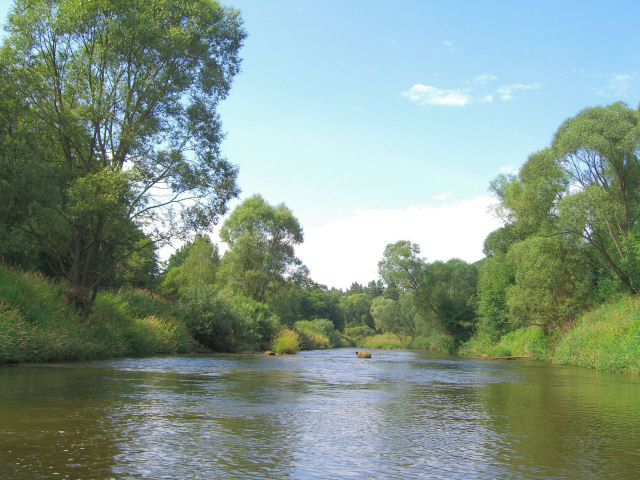Lusatian Neisse
The Lusatian Neisse, also known as the Western Neisse (German: Lausitzer Neiße; Polish: Nysa uycka; Czech: Luická Nisa; Upper Sorbian: uiska Nysa; Lower Sorbian: uyska Nysa), is a 252-kilometer (157-mile) river in northern Central Europe. It rises in the Jizera Mountains near Nová Ves nad Nisou on the Czech border, then crosses the Polish–German border for the final 197 kilometers (122 miles) to join the similarly northward-flowing Oder.
Its drainage basin spans 4,403 km2 (1,700 sq mi), with 2,201 km2 (850 sq mi) in Poland and the remainder primarily in Germany. After leaving the Czech Republic, the river reaches the tripoint of the three nations at Zittau, a German town/city. It is a left-bank tributary of the Oder, flowing between Neißemünde-Ratzdorf and Kosarzyn – north of Guben and Gubin.
The river has partially demarcated the German-Polish border since the 1945 Potsdam Agreement in the aftermath of World War II (along the Oder-Neisse line).
It is the longest and most populous of the three rivers with the same non-adjectival name in both languages (the other two rivers are the Eastern Neisse (German: Glatzer Neisse) and the Raging Neisse (Polish: Nysa Szalona; German: Wütende Neiße or Jauersche Neiße). It is commonly referred to as the Neisse.
Location: Czech Republic - Poland - Germany
Length: 252 km (157 mi)











